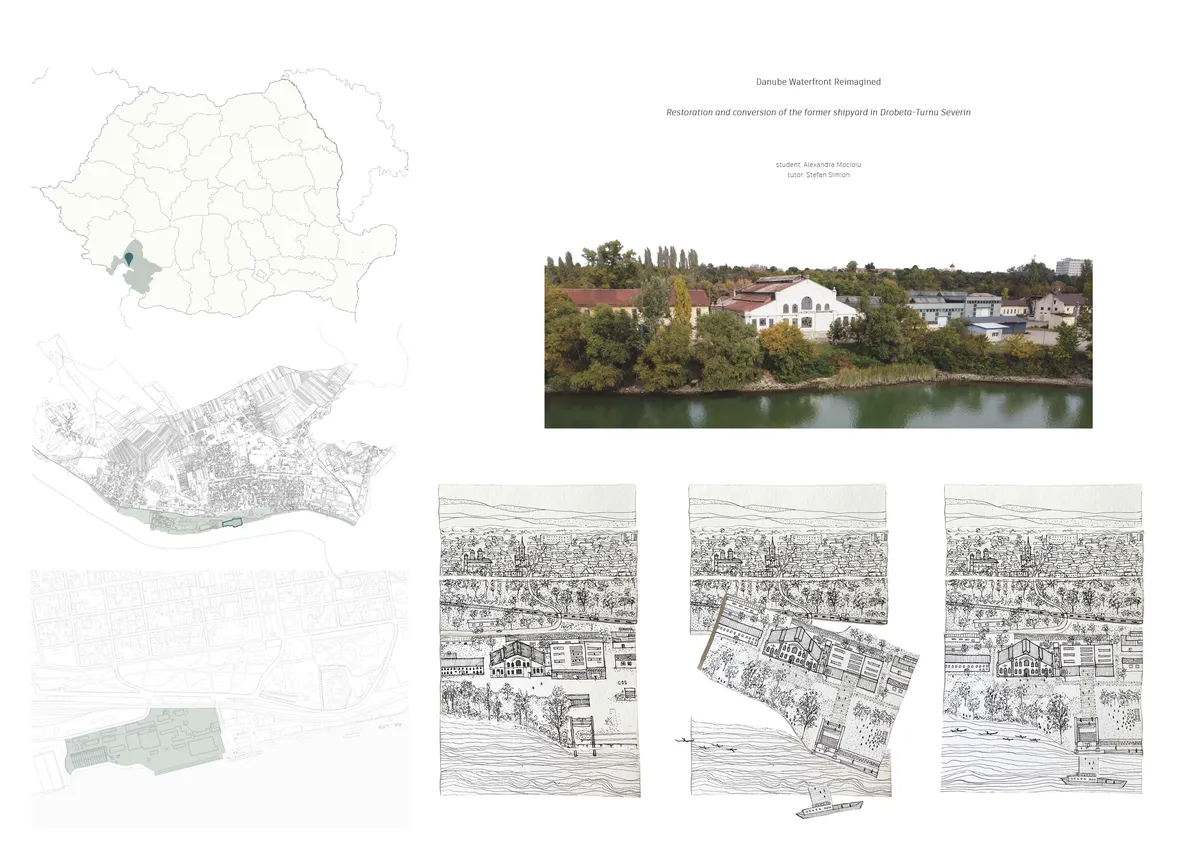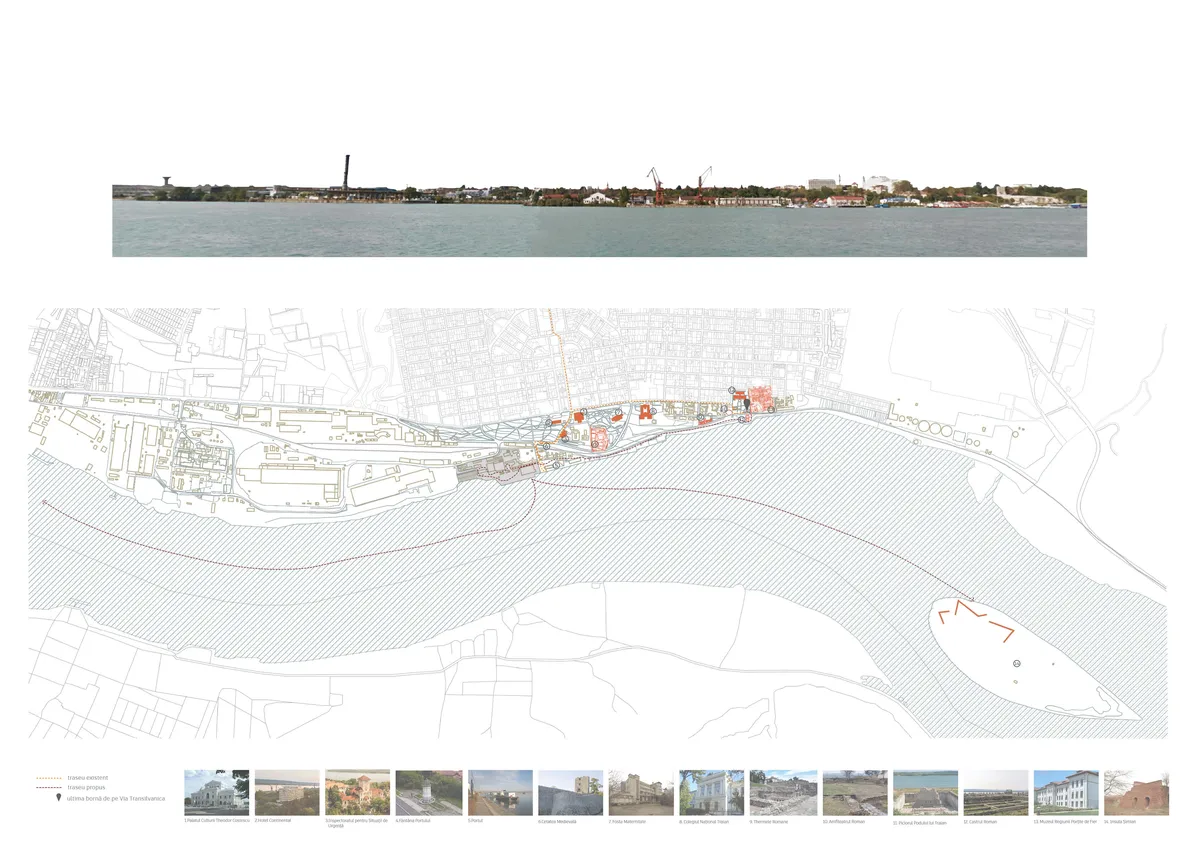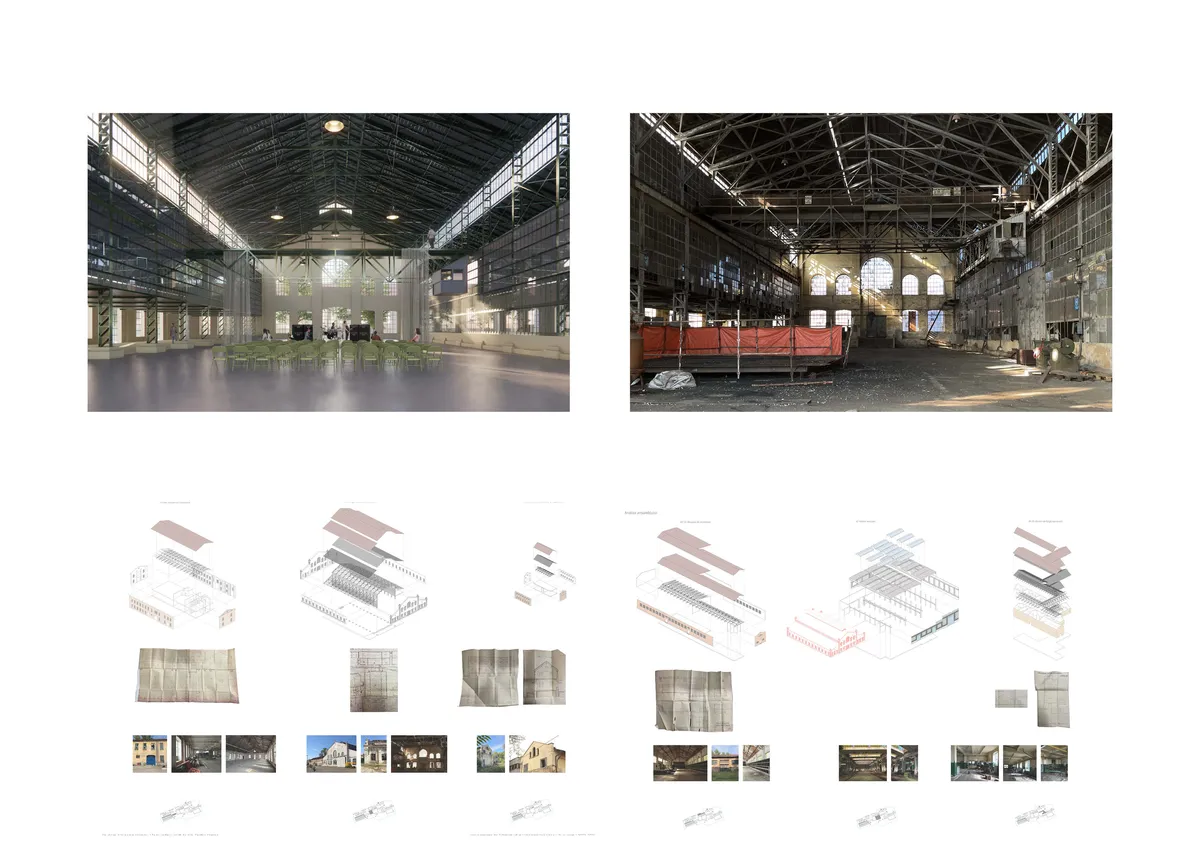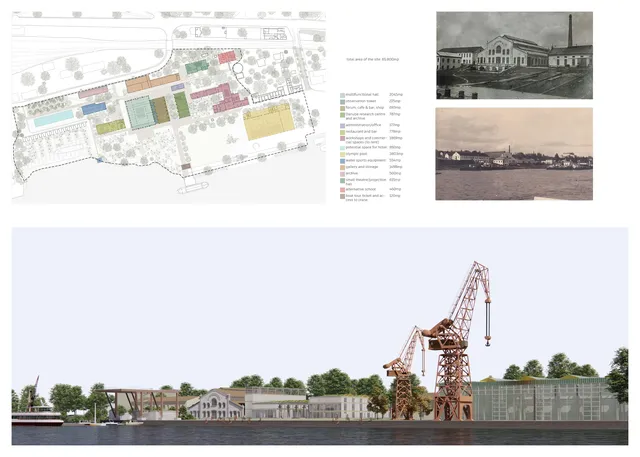
1/9

2/9

3/9

4/9

5/9

6/9

7/9

8/9

9/9
Graduation Projects
S
Selected
22
of votes of the public22
of votes of the public
Author(s) / Team representatives
Alexandra Mocioiu
Profession
arhitect
Collective/office
Asociația Front la Dunăre, Asociația 55
External collaborators
Îndrumători: conf. dr. arh. Ștefan Simion(proiectul de diplomă), conf. dr. arh. Ilinca Păun-Constantinescu (disertație)
Project location
Drobeta-Turnu Severin, România
Area
70.000 mp
Project start date
Octombrie 2023
Project completion date
Iulie 2024
Photo credits
Alexandra Mocioiu, Marius Vasile



